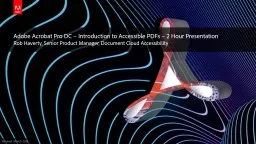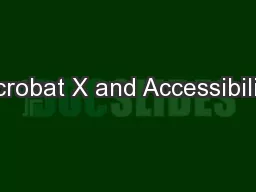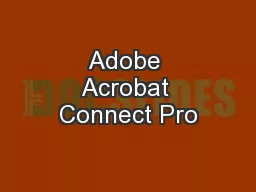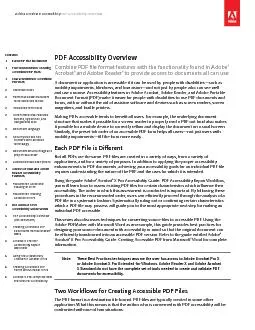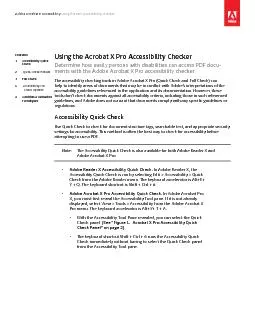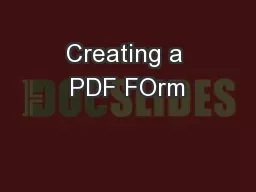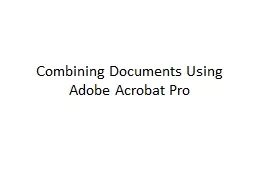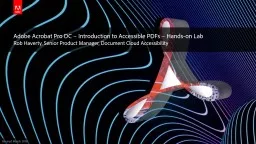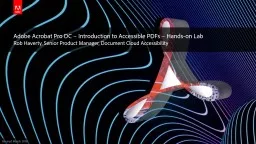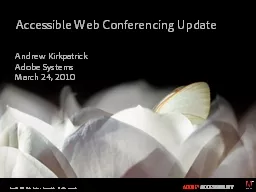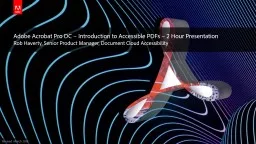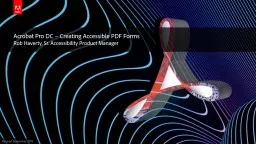PPT-Adobe Acrobat Pro DC – Introduction to Accessible PDFs – 2 Hour Presentation
Author : syfarect | Published Date : 2020-06-19
Rob Haverty Senior Product Manager Document Cloud Accessibility Revised March 2018 Agenda Session 1 Getting Ready in Acrobat Pro DC Session 2 The Basics of PDF
Presentation Embed Code
Download Presentation
Download Presentation The PPT/PDF document "Adobe Acrobat Pro DC – Introduction to..." is the property of its rightful owner. Permission is granted to download and print the materials on this website for personal, non-commercial use only, and to display it on your personal computer provided you do not modify the materials and that you retain all copyright notices contained in the materials. By downloading content from our website, you accept the terms of this agreement.
Adobe Acrobat Pro DC – Introduction to Accessible PDFs – 2 Hour Presentation: Transcript
Download Rules Of Document
"Adobe Acrobat Pro DC – Introduction to Accessible PDFs – 2 Hour Presentation"The content belongs to its owner. You may download and print it for personal use, without modification, and keep all copyright notices. By downloading, you agree to these terms.
Related Documents

